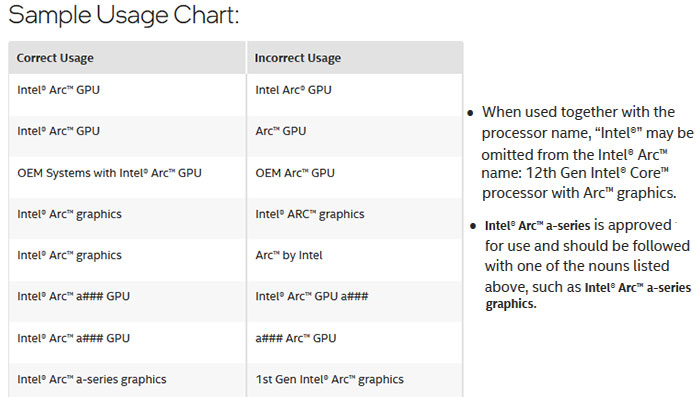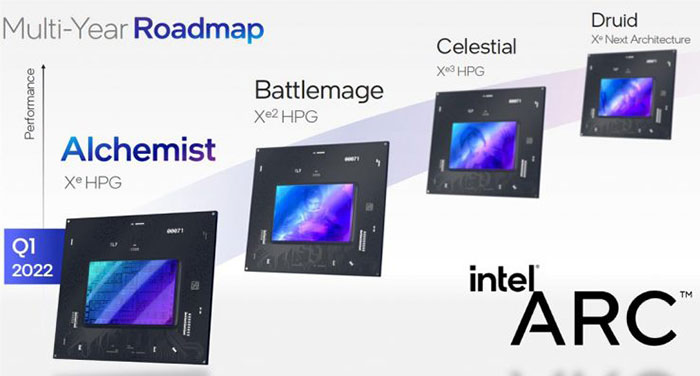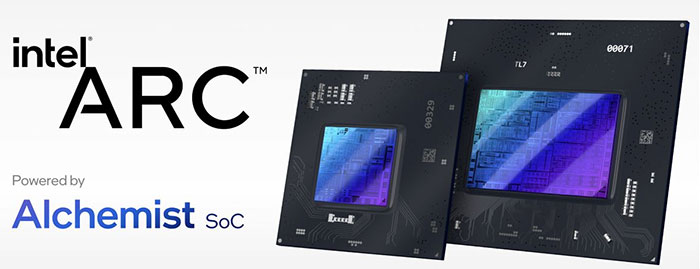Twitter-based PC hardware leaker momomo_us (via VideoCardz) has shared what he reckons will be the product naming structure for Intel Xe-HPG-based consumer graphics cards. The assertion has been backed up with a screenshot of what looks like a page from a corporate branding guidelines document. I've seen this kind of document plenty of times before, which usually also discusses logo positioning, scaling, colour use, and other recommendations and prohibitions for media and product partners.

The chart is rather self-explanatory, but the contents reveal an interesting nugget of info about the upcoming first series of Intel Arc graphics cards. In addition to the typically pernickety rules writers/marketers are expected to adhere to, we see that Intel's first series of Xe-HPG GPUs for consumers will be divided into tiers, made evident by the numbers following the Alchemist 'a' designation letter.
We don't know how Intel is going to divvy up its products but using its naming rules, but you might see three graphics cards in the initial launch roster as follows; the Intel Arc a300 GPU, Intel Arc a500 GPU, and Intel Arc a700 GPU. Those are just examples of the 'a###' format, and we don't even know if higher- or lower-numbers will be the most powerful SKUs in Intel's lineup, but it would be wise to follow a scheme somewhat relatable to its Core i3, i5 and i7 processors.

In future generations, the prefix letter will increment. For example, there might be a Battlemage GPU dubbed the Intel Arc b300, a Celestial GPU dubbed the Intel Arc c300, and so on.
A recent rumour from MLID via VideoCardz, suggests that Intel will release three Intel Arc a### desktop CPU cards with 512, 384, and 128 Execution Units. For the 512EU model, you will be buying a full implementation of the GPU, said to offer performance roughly equivalent to an Nvidia GeForce RTX 3070, depending on game/app. Further info from MLID suggests that this top of the line Intel Arc a### GPU will feature up to 16GB of GDDR6 running at 16Gbps.

Some think a middle SKU will use a cut down version of the big (512EU) GPU, making three SKUs.
I think it is still too early to talk of specific model specifications in the range, outside those broad GPU EU-count brushstrokes, given the sources. Hopefully, we will start to see some leaks of hardware specs and benchmarks from sources like AIBs and online benchmarks in the coming weeks (as we enter Q4), to warm us up for the launch/release early in 2022.













